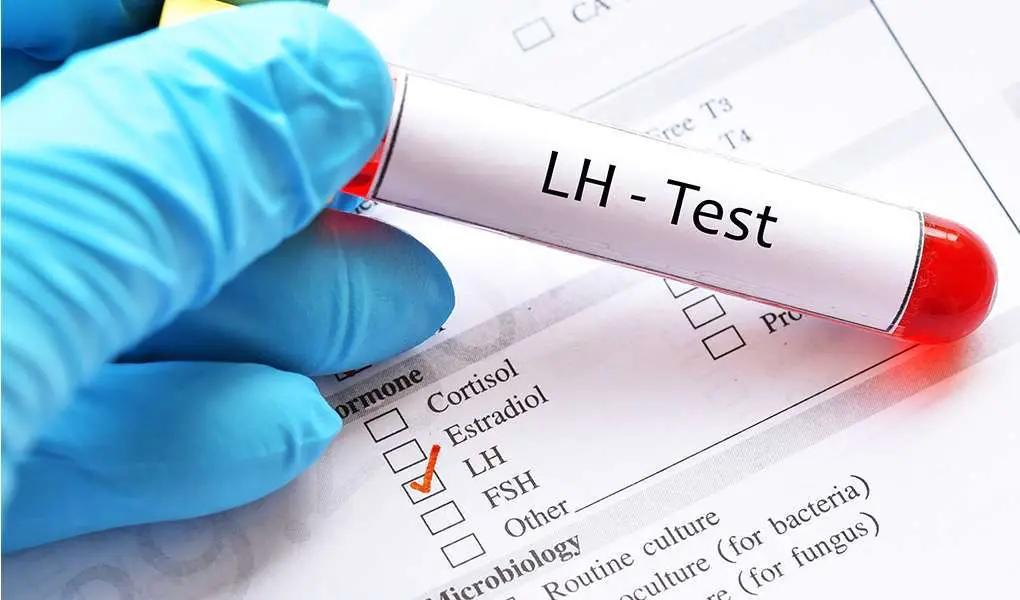Luteinizing hormone in menopause is a key marker that shows how the body transitions when estrogen levels fall. At SensIQ, Dr. Luke Barr and his team focus on educating women about these changes, giving clear science-backed guidance during a time when many feel overlooked.
This article explains what LH does, how it changes, and how testing can guide women’s health decisions.
Key Takeaways
- Luteinizing hormone in menopause naturally rises as the ovaries stop responding to brain signals, with typical levels ranging from about 19 to 100 IU/L.
- High LH values are expected after menopause and are not harmful, while unusually low results below 15 IU/L are rare and may prompt further evaluation.
- LH testing helps confirm menopause, but must be interpreted alongside FSH, estrogen, and clinical symptoms for accurate results.
- Symptoms like brain fog, sleep disruption, and mood changes are real experiences linked to broader hormonal shifts and should be discussed with a healthcare provider.
- SensIQ, under the guidance of Dr. Luke Barr, offers FDA-aligned support to help women manage these changes with safe, science-backed strategies.
What Is Luteinizing Hormone in Females?
Function of luteinizing hormone in menopause
Luteinizing hormone (LH) is a chemical messenger produced in the pituitary gland. Its primary role is to stimulate the ovaries to release an egg and trigger ovulation during the menstrual cycle¹. In younger women, LH works with follicle-stimulating hormone (FSH) to regulate fertility.
When menopause begins, ovulation stops. LH stimulation no longer leads to egg release, but the hormone remains present in the body. This shift shows how hormone levels adapt when ovarian function decreases. Understanding this process helps explain why symptoms such as hot flashes, mood shifts, or changes in sex drive appear.
Why LH levels change during midlife
As estrogen production drops, the brain signals the pituitary to release more LH. This is why women in perimenopause often show increased LH levels in blood testing. These changes are not harmful on their own, but they highlight how the endocrine system adapts when the ovaries reduce their activity.
This adjustment can explain why hormone levels feel unpredictable during the luteal phase and why menstrual cycles become irregular before they stop. Both men and women produce LH, but its role in women’s health is especially clear during menopause.
Luteinizing Hormone Levels in Menopause
High luteinizing hormone in menopause
Causes and effects
High LH hormone menopause levels often occur because the ovaries no longer respond to brain signals. The pituitary keeps producing LH, but without ovulation, levels remain elevated.
After menopause, luteinizing hormone levels typically range from about 19 to 100 IU/L, with many women showing values near the upper end of this spectrum¹. This does not indicate disease but shows the natural decline in ovarian function.
Some women notice brain fog, mood swings, or reduced sex drive when LH is high. These effects may reflect broader hormonal changes, not LH alone.
Treatment for high LH
There is no treatment aimed directly at lowering high LH in menopause. Instead, clinicians focus on managing related symptoms such as sleep disruption or irritability. Lifestyle changes, structured routines, and FDA-reviewed options can help address these challenges. Medical guidance ensures safe and tailored care.
Low luteinizing hormone in menopause

Is LH low in menopause?
For most women, LH rises after menopause. However, some test results may show lower values. This does not always signal a problem, but doctors may investigate further to rule out other hormone disorders.
Symptoms and effects of low LH
Low LH levels in females may be linked to delayed puberty, fertility challenges before menopause, or rare pituitary conditions. In menopause, low results can confuse but usually reflect test timing or lab variation. Symptoms may include fatigue, irregular bleeding, or changes in bone health.
Treatment for low LH
When low LH is detected, physicians may recommend hormone testing for FSH, estradiol, and thyroid markers. Treatment depends on the underlying cause, not the LH number alone. Supportive care may include nutrition, exercise, or medical therapies as guided by specialists.
Normal LH levels after menopause
After menopause, average luteinizing hormone levels range from roughly 19 to 100 IU/L². These values may vary depending on the lab and the blood sample taken. Elevated levels are expected once monthly cycles end. Clinicians interpret these numbers alongside other markers to confirm menopause.
Testing and Diagnosis
When doctors check LH in menopause
An LH test is often ordered when a woman experiences skipped periods, hot flashes, or insomnia. Blood testing measures hormone levels and can confirm if menopause has begun. Doctors usually pair this with an FSH or estradiol test for accuracy.
Interpreting LH with FSH and estrogen
FSH and estrogen provide context for LH results. High FSH with low estrogen plus increased LH strongly suggests menopause³. Without these comparisons, the meaning of LH alone may be unclear.
How doctors use LH ranges in testing
Doctors use standard reference values to guide diagnosis. A blood sample is analyzed, and results are compared to normal postmenopausal ranges. These test results are not viewed in isolation but within the broader picture of a patient’s health history and symptoms.
Limits of relying on LH alone
LH testing cannot fully explain menopause or related issues such as sleep disturbance or brain fog. Hormone levels vary daily, and one LH test may not reflect the bigger picture. Clinician interpretation is always essential to avoid misdiagnosis.
Symptoms and Brain Health
Links between LH and brain fog
Research suggests that luteinizing hormone LH may influence cognitive changes during menopause. Studies show associations between increased LH and memory shifts, though causation remains uncertain.
Women often describe losing words mid-sentence or struggling with focus. Dr. Luke Barr emphasizes that these symptoms are valid and deserve medical attention.
Other effects on mood and sleep
Menopause can bring irritability, anxiety, or waking up at 3 a.m. These patterns may reflect broader hormone changes, including LH receptors in the brain and the decline of estrogen support. While LH alone does not cause these symptoms, it is part of the hormonal shift that shapes women’s experience.
When to discuss results with your clinician
If test results raise concerns or symptoms interfere with daily life, women should discuss this with their healthcare provider. Discussion points include hormone testing options, safe treatment plans, and ways to stimulate the production of calm and steady sleep cycles without guesswork.
Managing Hormone Balance Safely

How to increase luteinizing hormone
There is no single method to increase LH after menopause, since higher levels are usually expected. In cases where LH is unexpectedly low, doctors may evaluate the pituitary gland. Treatments depend on underlying causes, not on boosting LH itself.
FDA-aligned supplements and lifestyle options
SensIQ offers evidence-informed guidance on managing brain fog and mood changes. Under the direction of Dr. Luke Barr, the focus is on pharmaceutical-grade nutrients that support women’s health without hormones.
While LH test values guide diagnosis, lifestyle practices such as regular sleep, a balanced diet, and exercise remain the first line of care. Some supplements suggest possible support for energy or mood. All claims must remain FDA-compliant and framed as supportive, not curative.
Risks of self-diagnosing without guidance
Self-diagnosing hormone problems based on one blood test can be misleading. Increased LH or low values may appear concerning, but they require context from a medical professional. Safe care means seeking expert evaluation before taking steps like hormone therapy or over-the-counter pills marketed for menopause.
Frequently Asked Questions
What are normal luteinizing hormone levels after menopause?
After menopause, luteinizing hormone levels usually range from about 19 to 100 IU/L. These values can vary by lab, so doctors interpret results alongside FSH, estrogen, and clinical symptoms.
Is LH low in menopause?
Most women experience increased LH after menopause. However, a blood test may sometimes show levels below 15 IU/L, which is considered atypical and may prompt further evaluation.
What happens if luteinizing hormone is low?
Low LH in a postmenopausal woman may reflect lab variation, timing of blood testing, or rare pituitary issues. Doctors often confirm with additional hormone testing before making any conclusions.
Can high LH hormone in menopause cause symptoms?
High LH itself is not harmful. However, many women notice brain fog, mood changes, or disrupted sleep when LH rises. These symptoms are more likely linked to overall hormonal changes, not LH alone.
When should I ask for an LH test?
Doctors may recommend an LH test if you have skipped periods, hot flashes, or other signs of menopause. A blood sample helps measure hormone levels, but results are interpreted together with FSH and estrogen.
Can supplements lower or raise LH hormone menopause levels?
There are no supplements proven to change LH hormone menopause values directly. Evidence-based nutrients, like those evaluated by SensIQ, may support mood or energy, but only a healthcare provider can guide safe treatment options.
References
- Cleveland Clinic. (2025). Luteinizing Hormone: Levels, Function & Testing. Retrieved from https://my.clevelandclinic.org/health/body/22255-luteinizing-hormone
- MedlinePlus. (2023). Luteinizing Hormone (LH) Levels Test. Retrieved from https://medlineplus.gov/lab-tests/luteinizing-hormone-lh-levels-test/
- Saxena, A. R., Seely, E. W., & Goldfine, A. B. (2012). Luteinizing hormone correlates with adrenal function in postmenopausal women. Endocrine Practice, 18(5), 777–783. Retrieved from https://pmc.ncbi.nlm.nih.gov/articles/PMC3459175/


